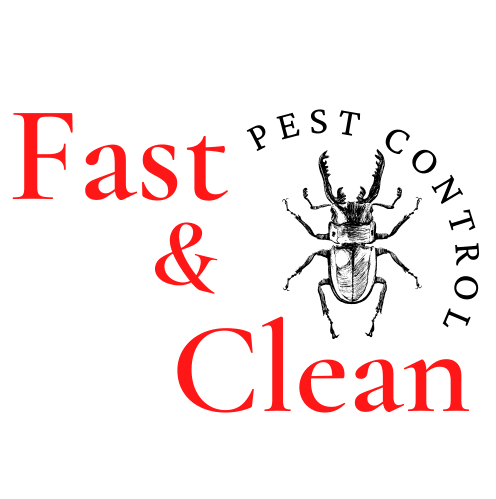Bedbugs
Bed bugs (Cimex lectularius) are small, wingless insects that feed on the blood of humans and other warm-blooded animals. They are reddish-brown in color, about the size of an apple seed when fully grown, and have a flat, oval-shaped body. Bed bugs are nocturnal and typically hide in cracks and crevices during the day, emerging at night to feed.
They are often found in mattresses, box springs, bed frames, and other furniture near sleeping areas. While their bites can be itchy and irritating, bed bugs are not known to transmit diseases. Infestations can spread rapidly, making early detection and treatment crucial for effective control.
Common Bedbugs
This is the most widespread and commonly encountered bed bug species globally. It’s the one you’re most likely to find in homes, hotels, and other human dwellings. They prefer human blood but will feed on other warm-blooded animals if necessary.
Tropical Bedbugs
As the name suggests, this species is primarily found in tropical and subtropical regions. It’s similar in appearance to the common bed bug but has some subtle differences. It also prefers human blood but can feed on other mammals and birds.
Signs of Bedbugs Infestation:
Bite Marks on Skin:
Small, red, itchy welts, often appearing in a line or cluster, typically on exposed skin like arms, legs, and torso. However, not everyone reacts to bed bug bites, so this isn’t always a reliable indicator. Bites appear in a zigzag or straight line pattern.
Visual Confirmation:
Seeing live bed bugs is the most definitive sign. They are small, reddish-brown, wingless insects, about the size of an apple seed.
Blood Stains on Sheets & Pillowcases:
Small, dark spots on bedding or mattresses, which are actually digested blood excreted by bed bugs. Small, rust-colored or reddish stains from crushed bed bugs.
Musty, Sweet Odor:
A strong, musty, sweet scent (like rotten raspberries or moldy clothes). Caused by bed bug pheromones, noticeable in heavy infestations.
Live Bedbugs:
Small, flat, reddish-brown insects, about the size of an apple seed (4-7 mm). Found in mattress seams, bed frames, behind headboards, under furniture, and inside electrical outlets. Check at night with a flashlight, as they are nocturnal.
Shed Skins & Egg Casings:
Bed bugs shed their exoskeletons as they grow. Look for translucent, light brown, or yellowish skins in mattress seams, furniture cracks, or carpet edges. Eggs are tiny, white, and oval-shaped (hard to see without magnification).
Dark Bed Bug Droppings:
Tiny, dark specks or smears on bedding, mattresses, or walls, which are bed bug droppings.
Preventing Begbug Infestation
Professional Pest Control:
This is often the most effective method. Professionals have access to specialized equipment and insecticides that can effectively eliminate bedbugs.
Heat & Heat Treatment:
Raising the temperature of the infested area to a lethal level for bed bugs (around 120°F) can be effective. This is often done by professionals.
Using a steamer to apply hot steam to mattresses, furniture, and other infested areas can kill bedbugs and their eggs.
Protect Your Bed & Furniture:
Use bed bug-proof mattress & pillow covers, these prevent bed bugs from hiding in your mattress. Keep your bed away from walls and furniture to limit hiding spots. Avoid clutter under the bed where bedbugs can hide.
Use Natural Bedbug Repellents:
Essential oils like lavender, peppermint, and tea tree oil – Can help deter bedbugs. Diatomaceous earth (DE) – A natural powder that kills bed bugs by drying them out (sprinkle around beds and furniture).
Be Careful When Traveling:
Since hotels, Airbnb rentals, and public transport are common sources of bedbug exposure, inspect the hotel rooms before unpacking, check mattress seams, headboards, and furniture for bedbugs or black fecal spots. Keep luggage off beds and floors, use a luggage rack or put bags in the bathtub. Wash and dry clothes on high heat after returning from a trip.Vacuum your suitcase and store it in a sealed plastic bag.
Washing and Drying:
Wash all bedding, clothing, and other washable items in hot water and dry them on high heat for at least 30 minutes.
Maintain a Clean & Organized Home:
Vacuum regularly, especially around the bed, couches, and carpets. Declutter your home, fewer hiding spots mean fewer places for bed bugs to live. Seal cracks and crevices in walls and furniture where bedbugs could hide.
Stay Connected
Stay updated with the latest pest control tips and exclusive offers by signing up for our newsletter.
Contact us to get a quote!
Let us know if you have any questions! You can reach out via our phone or via email directly.
Services
Pest Control
Removals
Cookies Policy
Privacy Policy
